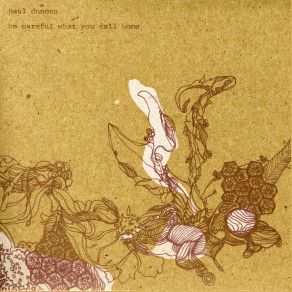Be Careful What You Call Home
Download links and information about Be Careful What You Call Home by Paul Duncan. This album was released in 2005 and it belongs to Rock, Pop, Alternative genres. It contains 13 tracks with total duration of 43:36 minutes.

|
|
|---|---|
| Artist: | Paul Duncan |
| Release date: | 2005 |
| Genre: | Rock, Pop, Alternative |
| Tracks: | 13 |
| Duration: | 43:36 |
| Buy it NOW at: | |
| Buy on iTunes $9.99 | |
| Buy on iTunes $9.99 | |
| Buy on Amazon $8.99 | |
Tracks
[Edit]| No. | Title | Length |
|---|---|---|
| 1. | In a Way | 2:01 |
| 2. | Tired and Beholden | 3:56 |
| 3. | The Night Gives No Applause | 2:23 |
| 4. | Toy Bell | 4:20 |
| 5. | You Look Like an Animal | 4:17 |
| 6. | Toy Piano | 3:01 |
| 7. | Manhattan Shuffle | 2:46 |
| 8. | Toy Bass | 2:51 |
| 9. | Oil in the Fields | 2:56 |
| 10. | Aria (Cave Song) | 3:30 |
| 11. | Content to Burn | 2:29 |
| 12. | This Old House | 4:39 |
| 13. | Riverbed | 4:27 |
Details
[Edit]On his second album, Be Careful What You Call Home, Paul Duncan is liable to remind the listener of 1960s folk-jazz singer/songwriters like Tim Buckley and Tim Hardin as he murmurs his vocals against elegant and becalmed acoustic arrangements. By the end of the disc, with several contemplative instrumentals in between, he may recall the ambient '70s works of Brian Eno and Robert Fripp. Either way, Duncan makes very introspective music; though his vocals are overdubbed, each voice seems more muttered than phrased. Even the tunes that have words don't have many. The entire lyric to "The Night Gives No Applause," for example, is a quatrain that goes "I'll be back in time to watch Jeopardy/After I've searched for a cause/When the crowd screams, 'Someone shepherd me'/The night gives no applause." And that's typical of the lyrical sentiments, which are simultaneously abstract and oddly humorous, though rendered with deadpan seriousness. "Be my employee of the month," Duncan sings in the album's wordiest number, "You Look Like an Animal." A musician who studied sound design in college, he is actually more comfortable constructing instrumental soundscapes like "Toy Bell," "Toy Piano," and "Toy Bass," mixing nature sounds in with slowly played musical instruments to create background music in the Eno manner. The result has a minimalist appeal, with each new sound and note given greater weight.